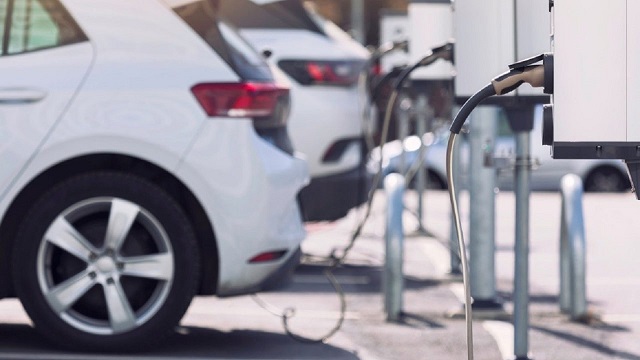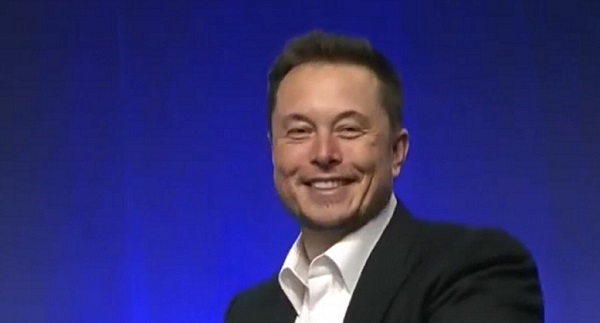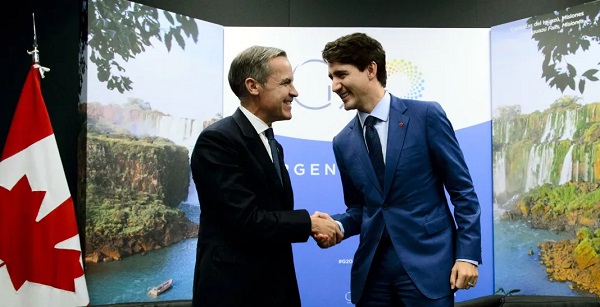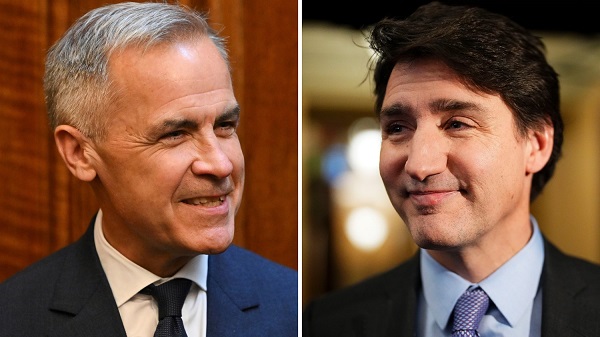Automotive
Energy Notes From the Edge: EV Industry on Limp-Home Mode; Greenpeace’s Firehose Used Against Them and They’re Not Happy

From the Frontier Centre for Public Policy
By Terry Etam
Consumers have spoken, auto makers are responding, and the odd man out are governments still paralyzed in 2019 when euphoric and nonsensical “environmental” policy danced on the supposed grave of last century’s fuel.
Summer was pretty quiet, thankfully, but time for a jolt to get reengaged. There’s no better way than getting yelled at, so today let’s talk about a surefire recipe – Electric Vehicles. Those that love EVs really love ‘em, and to speak ill of them in front of the fans is akin to asking questions about the size of their children’s ears.
EVs have an outsized role in the current cultural and economic landscape, in an odd way. They are seen as the best hope to turn the tide of general consumer emissions. Governments threw their full weight behind them to an astonishing degree, legislating them into projected dominance at an unprecedented (and as it turns out, insane) pace.
What makes EVs such a flashpoint is that they intersect with a bunch of stuff that people hold dear. For some, EV ownership feels like a major personal contribution to the global emissions problem, if owning one entails a significant personal commitment. For many, EVs make total sense if only running around town, or if wealthy enough to keep one in the garage amongst the Astons and Ferraris so as to be well-positioned to make an environmental statement if required. Some love them for their simplicity, with few moving parts and lower maintenance requirements (lower, but not zero). Still others love them because they can fuel up at home, at night. And then there is the cohort that feels their rage against oil companies sated cathartically every time they drive past a gas station, those that believe hydrocarbons bring nothing but death, irrespective of the fact that to that point in their life they’ve brought them everything within their purview, including all the things that keep them alive. Have pity on those people, the neutron-level boxing matches going on between their ears are not to be wished on anyone.
On the flip side of the equation, and what brings it to the news, is the public’s general feeling of “meh” towards them, the 80 percent that constitutes the non-extreme middle. In sane times, that is not a problem; major change happens gradually for such big ticket items, and most get a sense that certain segments of the economy work extremely well as EVs – delivery fleet vehicles, forklifts, urban taxis, etc. Many would drift toward EVs as battery technology improves, as range increases, as price falls. But such a shift would be a multi-generational thing, particularly with the infrastructure changes required.
Most consumers can see that that Total And Rapid EV Domination is not a particularly wise vision, even if governments have declared that that must happen within their dog’s lifespan.
Consumers do know a good idea when they see one, and we can see that by the explosion in popularity of hybrid vehicles – those with internal combustion engines augmented by modest battery packs and electric motors that give a certain emissions-free range before switching to gasoline power.
There’s a reason for this growing popularity – it makes sense on many levels. A hybrid removes some of the major reasons people are reluctant to go full-battery EV (BEV) – range anxiety, cold weather performance, etc. – and, as Toyota has wisely pointed out, hybrids are actually better for the environment in general than mass consumer adoption of EVs.
How can that be, you might wonder. Here is Toyota’s calculation, in what they call the 1:6:90 rule. An excellent write up can be found here, and the gist of it is: Because of immense challenges in finding, developing, mining, and processing critical metals and minerals (hundreds of new mines required globally, with each new mine having weaker grades than before, and with many jurisdictions becoming more hostile towards new mines), it makes more sense to utilize a given BEV’s minerals requirements to construct 90 hybrids instead.
Because many trips are very short, a hybrid can run on electric power for most of them, which is how the spreading-out of these minerals to many vehicles makes emissions reduction sense. Toyota calculates that if the metals/minerals used to construct a single EV were instead used to build 90 hybrids, the overall carbon reduction from those hybrids over their lifetimes would be 37 times that of a single EV (and with that sentence, I don my helmet for the incoming shouts of “Fossil Fuel Shill” – the aforementioned yelling).
Customers are clamouring to acquire hybrids. According to a Car Dealership Guy article (excellent auto news site, from a dealer perspective), in August, 48 percent of Toyota sales were hybrids, Hyundai had an 81 percent increase in hybrids (albeit from a relatively smaller number than Toyota), and Ford saw hybrid sales increase by 50 percent.
Volvo, a company that had pledged to be completely EV by 2030 and thereby banishing the smell of gasoline forevermore from customers’ nostrils, recently backed down from that pledge to announced hybrids would remain part of the equation indefinitely. “Everybody made a lot of assumptions two, three, four, five years ago, and that’s changed,” said Volvo’s CEO.
And then there is the Chinese onslaught of affordable, high-quality EVs that somehow policy planners didn’t see coming. Western countries announced bans on ICE in favour of full-EV by the next decade, and lo and behold, China controls most elements of an EV’s composition, and they took full advantage of that supply chain dominance (plus massive government support) to undercut virtually every western EV maker. Hey, you can’t do that, said US, Canadian, and EU governments, slapping huge tariffs on Chinese made EVs because well, we want to save the environment but not that badly (ultra cheap EVs are one of the few catalysts that would accelerate wide spread and rapid EV adoption among the masses).
Not sure where this goes next. Consumers have spoken, auto makers are responding, and the odd man out are governments still paralyzed in 2019 when euphoric and nonsensical “environmental” policy danced on the supposed grave of last century’s fuel. How they backpedal out of this is anyone’s guess, although there are signs, such as this headline: “Italy leads revolt against Europe’s electrical vehicle transition”. If memory serves from Italian traffic, they seem fine with virtually any sort of vehicular madness, so a automotive revolt in that land is a pretty big deal.
As with so, so many aspects of an energy transition, if the whole process had not been hijacked by zealots, we would be farther down the road, we would have consumers on side, we would have entire industries functioning properly instead of the fiascos we in for example the auto industry, and we most likely would have far less emissions.
Greenpeace USA on the ropes
In the big scheme of things, seeing something that has the words “green” and “peace” in the name fail would be disheartening; no sane person is against either the environment or peace. But put those two words together and you have something else entirely.
In the US, Greenpeace is for once holding the crappy end of the stick that they are used to jabbing at everything they disagree with. US energy pipeline giant Energy Transfer is seeking $300 million in damages for Greenpeace’s role in delaying the Dakota Access Pipeline. An ET victory would and should send shockwaves through the massively well financed protest industry that so far employs every tactic in the book to achieve victory (and by ‘victory’ we generally means ‘obstruction’ or ‘vengeance’ as opposed to any sort of constructive advancement). The big ENGOs spend hundreds of millions on staff and lawyers who literally have nothing to do other than bend society to their will without the bothersome hassle of going through the democratic process. Robert Bryce’s excellent Substack column keeps track of the staggering sums that US ENGOs churn through; Greenpeace US is a pipsqueak ($33 million annual engorgement) compared to locust-lawyer Natural Resources Defense Council’s staggering $548 million. With all that money, these groups construct nothing.)
It is a surprise there haven’t been more of these lawsuits filed by thwarted companies and hydrocarbon producers dragged into court for the sin of providing the fuel that keeps us all alive. It’s really not a hard argument to make; the world as we know it will collapse without hydrocarbon production, so shouldn’t thwarting that production on sometimes very flimsy grounds count for something? Shouldn’t blocking fuel from consumers that desperately need it (countless pipeline battles) count for something?
Greenpeace’s defence is pretty funny; suddenly they are insignificant, claiming to have had only a supporting role in the protests, and that the lawsuit is, the funniest part, an “attack on free speech.” Chaining one’s self (or worse, sending some naive acolyte to chain their selves) to a bulldozer on a construction site is, apparently, ‘free speech’, as is law fare and endless slanderous comments about the people and businesses that bring them the fuel that keeps their unhappy lives going.
Maybe the resurrected body, of which you can be certain will appear if this one is bankrupted, should start off with a bit of soul searching. Maybe peace means everyone working together for a common goal, not dramatizing a villain as the means of motivating the troops. Maybe ‘green’ should mean concern for habitat, concern for air pollution, concern for more intelligent use of resources, concern for the most logical global approach to progress, as opposed to a singular war against the bedrock of our society that it is glaringly obvious we cannot and will not live without.
First published here.
Terry Etam is a columnist with the BOE Report, a leading energy industry newsletter based in Calgary. He is the author of The End of Fossil Fuel Insanity. You can watch his Policy on the Frontier session from May 5, 2022 here.
Automotive
The high price of green virtue

By Jerome Gessaroli for Inside Policy
Reducing transportation emissions is a worthy goal, but policy must be guided by evidence, not ideology.
In the next few years, the average new vehicle in British Columbia could reach $80,000, not because of inflation, but largely because of provincial and federal climate policy. By forcing zero-emission-vehicle (ZEV) targets faster than the market can afford, both governments risk turning climate ambition into an affordability crisis.
EVs are part of the solution, but mandates that outpace market acceptance risk creating real-world challenges, ranging from cold-weather travel to sparse rural charging to the cost and inconvenience for drivers without home charging. As Victoria and Ottawa review their ZEV policies, the goal is to match ambition with evidence.
Introduced in 2019, BC’s mandate was meant to accelerate electrification and cut emissions from light-duty vehicles. In 2023, however, it became far more stringent, setting the most aggressive ZEV targets in North America. What began as a plan to boost ZEV adoption has now become policy orthodoxy. By 2030, automakers must ensure that 90 per cent of new light-duty vehicles sold in BC are zero-emission, regardless of what consumers want or can afford. The evidence suggests this approach is out of step with market realities.
The province isn’t alone in pursuing EV mandates, but its pace is unmatched. British Columbia, Quebec, and the federal government are the only ones in Canada with such rules. BC’s targets rise much faster than California’s, the jurisdiction that usually sets the bar on green-vehicle policy, though all have the same goal of making every new vehicle zero-emission by 2035.
According to Canadian Black Book, 2025 model EVs are about $17,800 more expensive than gas-powered vehicles. However, ever since Ottawa and BC removed EV purchase incentives, sales have fallen and have not yet recovered. Actual demand in BC sits near 16 per cent of new vehicle sales, well below the 26 per cent mandate for 2026. To close that gap, automakers may have to pay steep penalties or cut back on gas-vehicle sales to meet government goals.
The mandate also allows domestic automakers to meet their targets by purchasing credits from companies, such as Tesla, which hold surplus credits, transferring millions of dollars out of the country simply to comply with provincial rules. But even that workaround is not sustainable. As both federal and provincial mandates tighten, credit supplies will shrink and costs will rise, leaving automakers more likely to limit gas-vehicle sales.
It may be climate policy in intent, but in reality, it acts like a luxury tax on mobility. Higher new-vehicle prices are pushing consumers toward used cars, inflating second-hand prices, and keeping older, higher-emitting vehicles on the road longer. Lower-income and rural households are hit hardest, a perverse outcome for a policy meant to reduce emissions.
Infrastructure is another obstacle. Charging-station expansion and grid upgrades remain far behind what is needed to support mass electrification. Estimates suggest powering BC’s future EV fleet alone could require the electricity output of almost two additional Site C dams by 2040. In rural and northern regions, where distances are long and winters are harsh, drivers are understandably reluctant to switch. Beyond infrastructure, changing market and policy conditions now pose additional risks to Canada’s EV goals.
Major automakers have delayed or cancelled new EV models and battery-plant investments. The United States has scaled back or reversed federal and state EV targets and reoriented subsidies toward domestic manufacturing. These shifts are likely to slow EV model availability and investment across North America, pushing both British Columbia and Ottawa to reconsider how realistic their own targets are in more challenging market conditions.
Meanwhile, many Canadians are feeling the strain of record living costs. Recent polling by Abacus Data and Ipsos shows that most Canadians view rising living costs as the country’s most pressing challenge, with many saying the situation is worsening. In that climate, pressing ahead with aggressive mandates despite affordability concerns appears driven more by green ideology than by evidence. Consumers are not rejecting EVs. They are rejecting unrealistic timelines and unaffordable expectations.
Reducing transportation emissions is a worthy goal, but policy must be guided by evidence, not ideology. When targets become detached from real-world conditions, ideology replaces judgment. Pushing too hard risks backlash that can undo the very progress we are trying to achieve.
Neither British Columbia nor the federal government needs to abandon its clean-transportation objectives, but both need to adjust them. That means setting targets that match realistic adoption rates, as EVs become more affordable and capable, and allowing more flexible compliance based on emissions reductions rather than vehicle type. In simple terms, the goal should be cutting emissions, not forcing people to buy a specific type of car. These steps would align ambition with reality and ensure that environmental progress strengthens, rather than undermines, public trust.
With both Ottawa and Victoria reviewing their EV mandates, their next moves will show whether Canadian climate policy is driven by evidence or by ideology. Adjusting targets to reflect real-world affordability and adoption rates would signal pragmatism and strengthen public trust in the country’s clean-energy transition.
Jerome Gessaroli is a senior fellow at the Macdonald-Laurier Institute and leads the Sound Economic Policy Project at the BC Institute of British Columbia
Automotive
Elon Musk Poised To Become World’s First Trillionaire After Shareholder Vote


From the Daily Caller News Foundation
At Tesla’s Austin headquarters, investors backed Musk’s 12-step plan that ties his potential trillion-dollar payout to a series of aggressive financial and operational milestones, including raising the company’s valuation from roughly $1.4 trillion to $8.5 trillion and selling one million humanoid robots within a decade. Musk hailed the outcome as a turning point for Tesla’s future.
“What we’re about to embark upon is not merely a new chapter of the future of Tesla but a whole new book,” Musk said, as The New York Times reported.
Dear Readers:
As a nonprofit, we are dependent on the generosity of our readers.
Please consider making a small donation of any amount here.
Thank you!
The decision cements investor confidence in Musk’s “moonshot” management style and reinforces the belief that Tesla’s success depends heavily on its founder and his leadership.
Tesla Annual meeting starting now
https://t.co/j1KHf3k6ch— Elon Musk (@elonmusk) November 6, 2025
“Those who claim the plan is ‘too large’ ignore the scale of ambition that has historically defined Tesla’s trajectory,” the Florida State Board of Administration said in a securities filing describing why it voted for Mr. Musk’s pay plan. “A company that went from near bankruptcy to global leadership in E.V.s and clean energy under similar frameworks has earned the right to use incentive models that reward moonshot performance.”
Investors like Ark Invest CEO Cathie Wood defended Tesla’s decision, saying the plan aligns shareholder rewards with company performance.
“I do not understand why investors are voting against Elon’s pay package when they and their clients would benefit enormously if he and his incredible team meet such high goals,” Wood wrote on X.
Norway’s sovereign wealth fund, Norges Bank Investment Management — one of Tesla’s largest shareholders — broke ranks, however, and voted against the pay plan, saying that the package was excessive.
“While we appreciate the significant value created under Mr. Musk’s visionary role, we are concerned about the total size of the award, dilution, and lack of mitigation of key person risk,” the firm said.
The vote comes months after Musk wrapped up his short-lived government role under President Donald Trump. In February, Musk and his Department of Government Efficiency (DOGE) team sparked a firestorm when they announced plans to eliminate the U.S. Agency for International Development, drawing backlash from Democrats and prompting protests targeting Musk and his companies, including Tesla.
Back in May, Musk announced that his “scheduled time” leading DOGE had ended.
-

 Carbon Tax2 days ago
Carbon Tax2 days agoCarney fails to undo Trudeau’s devastating energy policies
-

 Business2 days ago
Business2 days agoBudget 2025: Ottawa Fakes a Pivot and Still Spends Like Trudeau
-

 Health2 days ago
Health2 days agoTens of thousands are dying on waiting lists following decades of media reluctance to debate healthcare
-

 Opinion2 days ago
Opinion2 days agoLandmark 2025 Study Says Near-Death Experiences Can’t Be Explained Away
-

 International13 hours ago
International13 hours ago“The Largest Funder of Al-Shabaab Is the Minnesota Taxpayer”
-

 Focal Points2 days ago
Focal Points2 days agoSTUDY: TikTok, Instagram, and YouTube Shorts Induce Measurable “Brain Rot”
-

 Bruce Dowbiggin19 hours ago
Bruce Dowbiggin19 hours agoElbows Down For The Not-So-Magnificent Seven: Canada’s Wilting NHL Septet
-

 Censorship Industrial Complex16 hours ago
Censorship Industrial Complex16 hours agoUK Government “Resist” Program Monitors Citizens’ Online Posts









